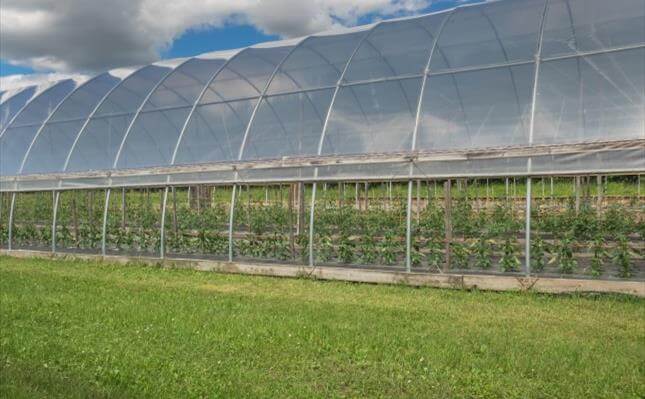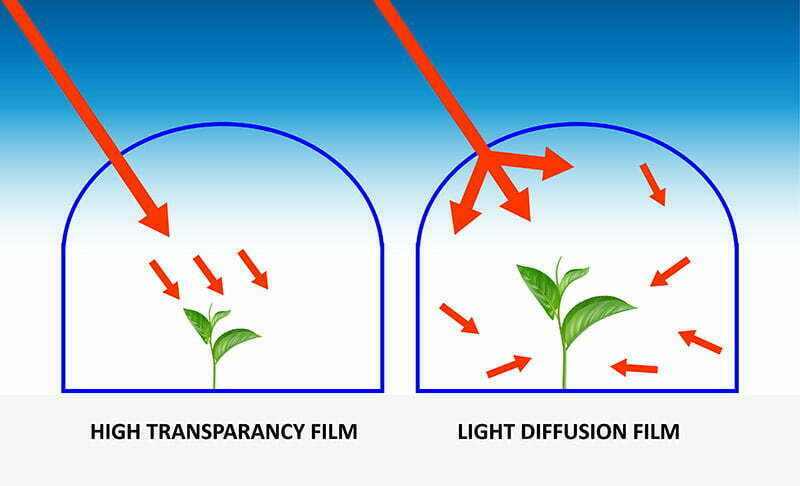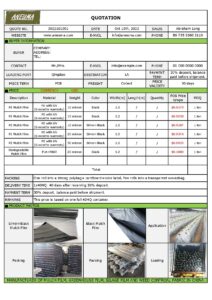Introduction
Winter farming, with its icy challenges and frigid temperatures, may seem like an insurmountable hurdle for growers. Yet, as the world of agriculture evolves, so do the methods to overcome nature’s seasonal barriers. In the realm of winter farming, one remarkable solution stands out: insulated greenhouse film. This article delves into the science, selection, installation, and advantages of utilizing insulated greenhouse film to conquer winter’s chill and nurture thriving crops.
The Science Behind Heat Retention
Before we dive into the benefits of insulated greenhouse film, it’s essential to grasp the science behind heat retention. In a greenhouse, sunlight penetrates the transparent coverings, warming the air and soil. However, once the sun sets or temperatures drop, the accumulated heat begins to dissipate. This is where insulated greenhouse film plays a pivotal role. It acts as a thermal barrier, trapping and redistributing the heat within the structure. This dynamic process ensures a stable and favorable environment for plant growth, even when winter’s frosty grip is at its strongest.

Choosing the Right Insulated Greenhouse Film
Selecting the perfect greenhouse film is akin to choosing a tailored suit—it should fit your needs snugly. When seeking an insulated option, consider the vital factors. First, delve into the world of R-values. A high R-value in your greenhouse film signifies superior insulation, adept at retaining heat and shielding your plants from the harshest chills.
Don’t overlook durability—opt for an insulated greenhouse film with exceptional UV stability. This ensures that it can endure prolonged sun exposure without deterioration, providing seasons of service.
Lastly, evaluate your greenhouse’s layout and configuration. Proper installation, with a tight, gap-free fit, and the integration of heat-retaining elements, will maximize your chosen insulated greenhouse film‘s performance. It’s not just about insulation; it’s about a tailored solution for your thriving garden in all seasons.
Installation and Configuration
Installing insulated greenhouse film may seem daunting, but with the right guidance, it becomes an achievable task. Properly securing the film and sealing any gaps are essential steps. Moreover, configuring the greenhouse layout to maximize heat retention is equally vital. Placing heat-absorbing materials strategically and ensuring efficient air circulation can significantly enhance the film’s performance.
The installation of your chosen greenhouse film is where the science of heat retention transforms into practical reality. Begin by securing the greenhouse film snugly to your structure, leaving no room for chilly drafts to sneak in. A well-fitted film is your first line of defense.
Next, consider your greenhouse’s layout. Position heat-absorbing materials strategically—think thermal mass walls or water barrels. These elements act as reservoirs, storing heat during the day and radiating it when night’s chill descends. Proper configuration creates a microclimate where plants thrive, no matter how frosty the world outside becomes.

Winter Crop Selection
The choice of crops is a pivotal aspect of successful winter greenhouse farming, harmonizing with the protective cocoon of proper greenhouse film. Opt for cold-tolerant varieties like robust kale, resilient spinach, and select lettuce breeds. These hardy options relish the controlled environment created by your greenhouse film, extending your growing season into winter’s embrace. With the right crops and climate control, your greenhouse becomes a thriving haven even when frost clings to the world outside.
Temperature Regulation and Energy Efficiency
The benefits of insulated greenhouse film extend beyond crop protection. By maintaining consistent temperatures, this technology reduces the need for excessive heating, resulting in significant energy savings. With reduced heating requirements, growers can not only lower operational costs but also reduce their carbon footprint.
Frost Protection Strategies
Frost can be a formidable adversary in winter farming, but it can be conquered. Insulated greenhouse film plays a vital role in preventing frost-related issues. Implementing techniques like overhead sprinklers or thermal curtains, in combination with the film, can safeguard crops from frost damage.
When winter’s icy breath threatens your thriving oasis, ingenious insulated film comes to your crops’ rescue. Beyond its heat-retaining prowess, it plays a pivotal role in shielding your plants from the perils of frost. Implementing insulated film alongside other strategies, such as overhead sprinklers or thermal curtains, offers a multi-layered defense.
Insulated film minimizes heat loss, preventing temperature dips that often lead to frost formation. Pair this with thermal curtains, which trap warm air within the greenhouse during the night, acting as a cozy blanket for your plants. On particularly chilly nights, deploying overhead sprinklers can create a protective ice barrier. As the water freezes, it releases latent heat, keeping the temperature within the greenhouse above freezing point.
These innovative techniques, bolstered by the thermal properties of insulated film, ensure that frost’s icy touch remains at bay, safeguarding your winter harvest.

Case Studies: The Triumph of Insulated Greenhouse Film in Winter Farming
In the realm of agriculture, success stories often emerge from the soil and sweat of innovative farmers who dare to defy nature’s seasonal constraints. Winter farming, once an elusive dream, has become a tangible reality thanks to the remarkable advancements in insulated greenhouse film technology. Let’s delve into a few compelling case studies that illuminate the transformative power of this innovative solution, showcasing how it has ushered in increased crop yields, extended growing seasons, and enhanced profitability for farms across diverse landscapes.
Case Study 1: The Frost-Resistant Orchards
Imagine an orchard nestled in a region known for its harsh winters, where fruit-bearing trees often succumb to frost’s icy clutches. Here, an orchardist, inspired by the potential of insulated greenhouse film, decided to test its limits. By installing this advanced film over selected rows of fruit trees, a microclimate of protection was created. The results were astounding. Not only did the fruit trees endure the frigid temperatures unscathed, but they also blossomed earlier in the spring, leading to a more extended growing season and a bountiful harvest that surpassed all expectations. The insulated greenhouse film had proven its mettle by transforming a once-vulnerable orchard into a frost-resistant haven of fruitfulness.
Case Study 2: The Flourishing Winter Greens
In a region where winter’s frosty fingers typically bring outdoor vegetable cultivation to a halt, a local organic farm sought a solution to provide fresh produce year-round. They turned to insulated greenhouse film to extend their growing season. By installing the film in their greenhouses, they created a climate-controlled environment that allowed them to cultivate cold-tolerant crops throughout the winter months. The results were not only impressive but also lucrative. With the demand for fresh, locally-grown produce surging even in the depths of winter, the farm not only met this demand but also expanded their customer base. This success story showcases how insulated greenhouse film can not only protect crops but also turn seasonal challenges into opportunities for growth and profit.
Case Study 3: The Blooming Flower Nursery
For a nursery specializing in rare and exotic flowering plants, preserving the delicate blooms during the winter months was a perennial challenge. The adoption of insulated greenhouse film brought about a profound transformation. The film created a stable microclimate, shielding the plants from extreme temperature fluctuations. As a result, these exquisite blooms thrived throughout the winter, captivating customers eager to adorn their homes with the beauty of these unique flowers. The nursery’s reputation blossomed too, attracting horticulturists and collectors from far and wide. This case study demonstrates that insulated greenhouse film isn’t just for food crops; it can nurture and protect ornamental plants, expanding the possibilities for diverse agricultural enterprises.
These real-world case studies are testaments to the game-changing potential of insulated greenhouse film in winter farming. They highlight not only the technology’s capacity to shield crops from harsh elements but also its ability to usher in new opportunities for agricultural growth, sustainability, and profitability. The success stories inspire us to reimagine the boundaries of farming and embrace the transformative power of innovation, even in the coldest of seasons.

Sustainability and Environmental Impact
In the era of eco-conscious farming, the sustainability of agricultural practices cannot be overlooked. Insulated greenhouse film contributes to sustainability by minimizing resource consumption. Reduced energy use, decreased water requirements, and the ability to grow crops year-round all play a part in promoting environmentally friendly farming practices.
Conclusion
As the world of agriculture continues to evolve, so too do the solutions available to overcome nature’s seasonal challenges. Insulated greenhouse film stands as a testament to innovation in winter farming. By understanding its science, selecting the right material, and adopting best practices in installation and crop management, growers can unlock the potential of winter farming with confidence. The advantages of heat retention and frost protection provided by insulated greenhouse film not only extend growing seasons but also cultivate sustainability and prosperity in modern agriculture. Winter farming is no longer a formidable obstacle; it’s a season of opportunity for growers willing to embrace the benefits of insulated greenhouse film.

